If one thing is thriving during this pandemic, it’s the earth. We have been forced to take a step back and re-evaluate how we contribute to our communities, economy and the natural environment. While travel across most of western Europe will soon start to emerge, the rest of the world has a long way to go. It’s important to understand that while travelling will always be a part of who we are, how and where we travel will certainly be different. What will the “new normal” look like?
Let’s unpack what travel may look like once the pandemic of COVID-19 subsides and flights are able to resume.
How might travel be safer?
More stringent health and safety measures at airports
Short-term, this could result in longer queues at check-in counters and border gates, especially for international flights. The general consensus is to create a touchless experience, with the likely inclusion of biometrics and automated e-gates. All travellers and staff will be required to wear face masks. You might just swap out the snacks for hand sanitizer as PPE vending machines become the new normal.
Airports are definitely stepping up their role in social distancing and sanitization with Abu Dhabi Airport currently trialling voice-activated kiosks to monitor passenger temperatures and respiratory rates; while Hong Kong Airport is doing lots of AI testing around sanitization methods. If you land in the UK, you might just be greeted by a friendly hound, trained to sniff out any respiratory diseases.
Outside of the airport, we could see an extension of times in drop-off and pick-up zones.
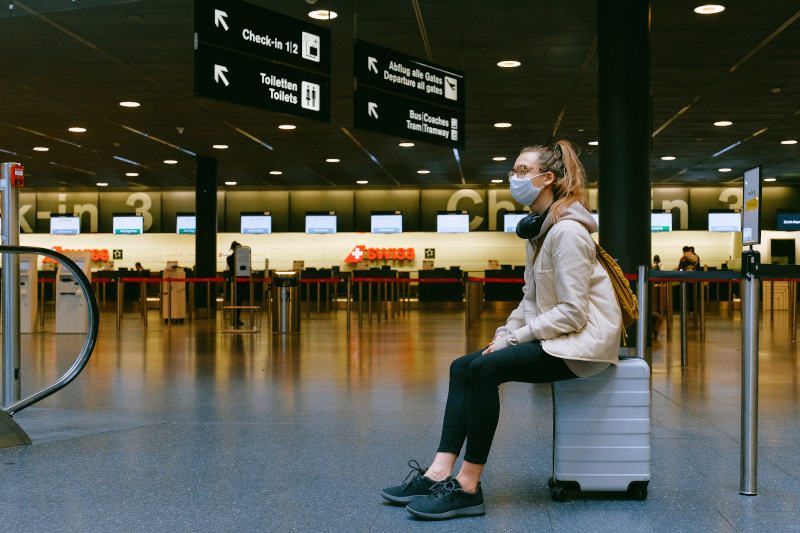
Limited physical contact on flights
Airlines are ideating ways to make for a safer flying experience for their customers. For example, Easyjet is proposing to leave middle seats free, while Italian airline seat manufacturer, Aviointeriors, share their latest cabin designs with built-in shields.
Some airlines are taking heavier precautions than others, with the likes of Qatar Airways kitting out their cabin crew in full-body PPE suits, including safety goggles, gloves and masks.
Hot food services could be a thing of the past, being replaced by pre-packaged cold meals.
With ramped-up efforts on self-service procedures, inflight entertainment could pivot into a full mobile Smartphone experience or AI integration of touchless tracking-based interface. The jury’s still out on this one.
Enhanced mobile integration
If you think your phone is working overtime now, things are about to get a whole lot more digital. In a way to limit human contact, airlines are most likely to send flight updates straight to your phone, including when to arrive at security and boarding gates. Take note that flight schedules could be unpredictable as borders slowly start opening up, so be on the lookout for last-minute cancellations.
Don’t skip travel insurance
Travel insurance is likely to become the new normal when booking future travel. With the outbreak of COVID-19, many airlines and hotel groups modified their policies to accompany the cancellation and rebooking of travellers affected by the outbreak. While many travellers see travel insurance as an unnecessary add-on, we believe customers will start to realise its value, regardless of whether you’re travelling locally or overseas.
What travel trends can we expect?
Sustainable tourism is the silver lining
Sustainable travel is now at the forefront of local tourism. Supporting local businesses and minimising our environmental impact is crucial to our survival. This pandemic has certainly given rise to a more conscious way of living and travelling.
Find out more about ecotourism and sustainable travel.
Maintaining health and safety is now a priority
Traveller’s minds will be engraved with precautions to travel safe. Hand sanitizers, face masks and protective gear will be the new normal long into the future. Whether you like it or not, this regimen will become second nature, from the moment you step into an airport or train station. And be sure to keep a bottle of sanitizer or wet wipes on you at all times.
Future trips will be longer and more meaningful
As soon as travel bans are lifted, family reunions will be top of the list. Whether you opt for a self-drive road trip or a more luxurious alternative like the Blue Train or Rovos Rail, you’re bound to appreciate your holiday just a little more.
All-inclusive holiday packages will, no doubt, be a big hit as people search for more bang for their buck.
Don’t expect rock-bottom prices just yet. The global drop of more than 4,6 billion passengers this year alone has resulted in huge financial losses across airlines. While planes need to be at least 77% full just to break even (Hoeller, Insider), we can expect that fewer passengers due to social distancing will inevitably push up the price of plane tickets.
Direct and digital will pave the way forward
From the moment you book your trip online to the second you land back home, we predict that digital systems will drive the majority of your trip. Digital paper trails, travel documents stored on a cloud and apps to make your travel a little easier will feature even more so in this new normal of future travel trends.
Travel tips to keep in mind:
- Stick to the reliable, well-known brands: Some deals are too good to be true, so stick to the trusted companies you know when booking your trips.
- What to pack: Essentials like hand sanitizers and/or wipes and face masks will become the norm to pack in your carry-on bags or handbag when travelling.
- Step up your hygiene regime: Wear a mask, regularly wash your hands, avoid touching your eyes, nose and mouth and keep a social distance in queues.
- Educate yourself: Stay up to date with the ongoing regulations and travel requirements.
Find the latest updates on airline policies and safe travel precautions
Some positive effects of lockdown
While COVID-19 is an unforeseen wreaking ball, there have been a few positives to come out of the global lockdowns. China’s air pollution was at an all-time low, and cities like New York, London, Paris, Rome and Los Angeles saw declines of 28-53% in traffic congestion.
Italy

Italy is renown as one of the most beautiful countries in the world, but it’s no secret that it was one of the worst-hit by the COVID-19 pandemic. During the country’s lockdown, Venice came to a halt and the canals started to clear up, showing thriving life underwater, something long forgotten since overtourism left the canals crowded and murky.
The UK
In a time where climate change was at the forefront of 2020 discussions, the UK saw the biggest drop in carbon emissions. In a city like London decorated with concrete towers and architectural beauty, it’s almost impossible to imagine wildlife roaming the streets. Yet, just last month deer were documented taking over the abandoned streets of Harold Hill.
Top countries to travel to after COVID-19:
Travel bans across many parts of the world are gradually being lifted from June onwards. Here are our top four places to travel to, based on future travel trends.
1. Belgium

Belgium’s enchanted puzzle towns make this country top on the list. Regarding safe travel, the hidden gem town of Spa, situated on the east side of Belgium, has been a popular destination for people hoping to improve their health. What’s not to love with its mineral water baths surrounded by spectacular countryside walks?
Take in the quiet, cosy atmosphere of the slow life. Just a short drive from Brussels, its surrounding spa resorts live up to its name for the ultimate revival.
2. Ireland
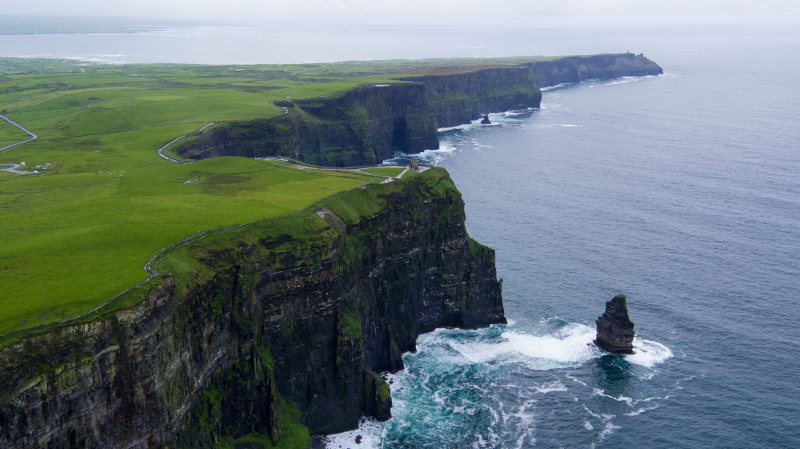
Ireland is one of the most beautiful countries in the world to escape back in time. We’re talking cobble streets straight out of an 1800s novel. Travel to a surreal world where the history enthusiasts can visit a place that has a wealth of castles, museums and bohemian markets. Nature lovers have the opportunity to enjoy a slow hiking trip and appreciate the green blankets of neverending landscape in Connemara. This environment shows off its beauty from sunrise to sunset where a brown pollution belt has since disappeared.
3. Norway

The Scandinavian country of Norway is known for its remote location, incredible scenery and surreal fjords. The unspoiled panoramic views vary from alpine runs, traditional fisherman’s cabins dotted along the coastlines and hiking trails along waterfalls. With endless nature photo opportunities, don’t forget about the famous Northern Lights that will shine ever so bright for you to appreciate life after lockdown. You will never be this happy to be stranded in the middle of nowhere!
4. Spain
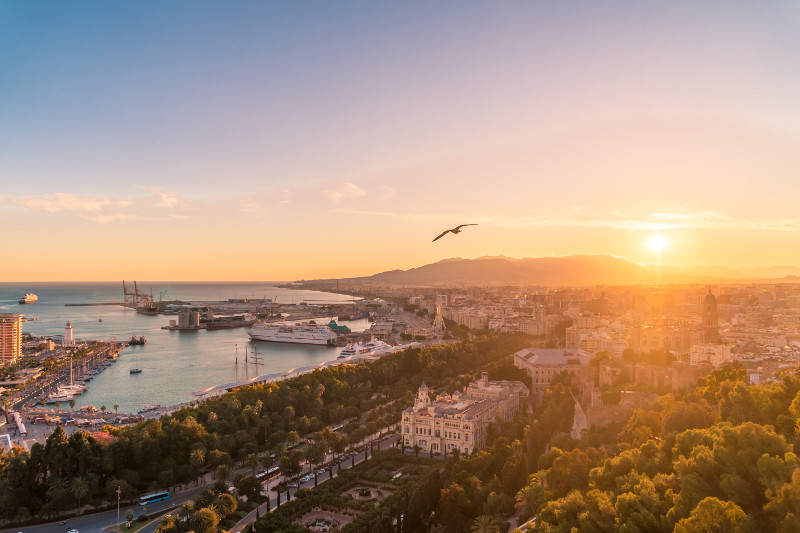
Apart from the rich culture and festival atmosphere that Spain is well known for, there are limitless amounts of hidden gems waiting for you to (re)explore, from some of the world’s craziest footpaths to a zipline between Spain and Portugal. Furthermore, there are endless adventures to get the adrenaline pumping, such as skiing, snowboarding, scuba diving and hiking along the coastlines where some of the most famous surf competitions take place.
A big part of Spain’s economy relies on tourism and local businesses will welcome travellers once again.
Eco-fact: Spain has the third most UNESCO World Heritage Sites in the world – a total of 45! Beat the crowds and visit them without the queues.
Countries across Europe are expected to open their borders in June for essential and limited travel. These countries include:
Austria, Belgium, Cyprus, France, Finland, Germany, Greece, Iceland, Italy, Switzerland and Turkey. See the full list here.
The new normal of air travel paints a different picture of how we are currently used to travelling. As travel trends emerge and airlines devise innovative ways to create a safe space for their passengers, we look forward to the runway ahead.
Are you excited to travel to your favourite destination after lockdown? Let us know in the comment section which country you cannot wait to visit.
Sign up for our newsletter to stay updated on all things travel.
Also read:
How Lockdown Affects the Travel Industry
Your Guide to Repatriation Flights
Article written by Nadia Marth and Bea Lingenfelder.
All information on this blog page was correct at the time of publishing and may change at any time without prior notice. Travelstart will not be held liable for loss or inconvenience resulting from the use of out-dated or incorrectly noted information.
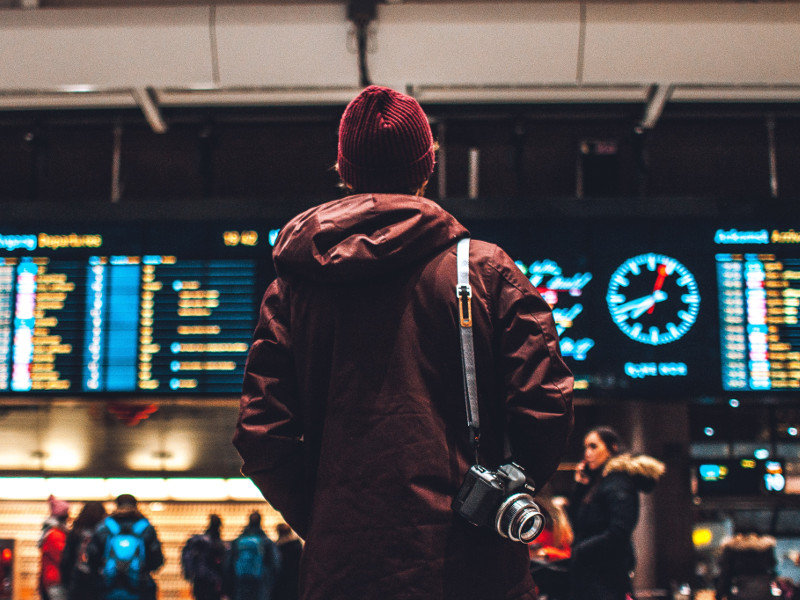






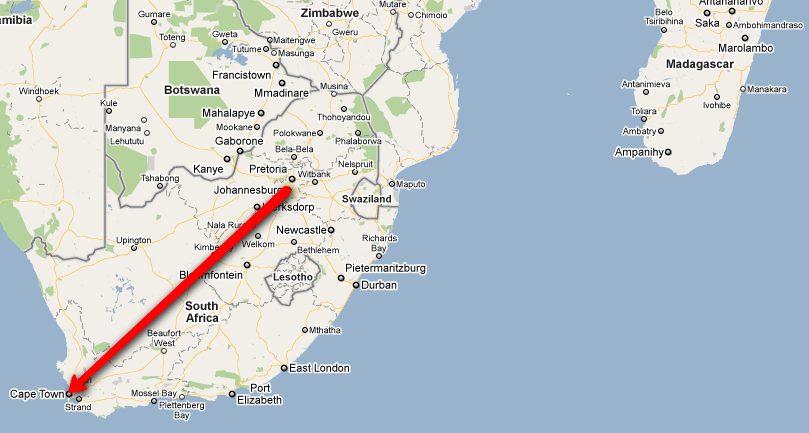
I cannot wait to visit Turkey once the travel ban is lifted. Hoping to take my grandkids along.
Nadia Thanks These are a lot of useful information.
Now me can’t wait for SA to re-open provincial borders,specially September for our longer than a year planned Kruger park trip for 12 days.
Then for November a cruise for 5 nights Durban Maputo Portguese island and Pomene .Hoping for SA ports to open for the new season. Me holding thumbs that our planned holidays will happen as planned
For locally flights hope it also opened before 15th September My daughter and grandson must fly from Port Elizabeth to OR Tambo for our Kruger trip.
Thanks for that info that me can book there flights from 15the June onwards
Lots of future holiday plans overseas in my mind. Will definitely contact you for more travel information
Thanks for info send. That will make planning definitely easier.
Thanks a lot
Wilna Terblanche
Hi Wilma,
Thanks for comment and support.
Yes, hoping borders will open soon. So many amazing places to visit and enjoy.
Sounds like you have a lot of wonderful travel adventures planned.
We look forward to assisting you with your next booking.
Yours in safe travel.
I cannot wait to be able to go to Italy again – I was born there and have not been able to visit this year – so perhaps September .
going to Umhlanga in October – cant wait after this lockdown
Hi! I don’t know if my previous comment was received, so I will try again. My wife and I are currently in the USA. We want to return to SA, where we are citizens, where we have a son and his family, and where we have our own flat. When is the earliest we would be able to fly, and would we be able to go directly to our own flat upon arrival? I would appreciate your reply. Thanks!
Hi Mervyn,
Thanks for contacting us.
If you are a South African citizen wanting to return home to South African you would need to contact your nearest South African Embassy and they will need to advise if there will be another repatriation flight and which city it will be flying out of.
The embassy of the respective countries sends a notification to its citizens asking who’s interested in being repatriated.
Based on demand, the foreign ministry of the home country then contacts airlines and/or travel companies who can help facilitate a repatriation flight.
Once a flight has been scheduled, the travel date and other terms are communicated to the stranded citizens. Since there are often a limited number of seats available, certain groups such as the elderly or those with medical or other needs are often prioritized.
The local embassy seeks approval from the departing country for landing permits and ensures that any other requirements are met.
The embassies or travel companies involved typically send a link to book and pay to the prioritized passengers first. Remaining seats are then opened up to other travellers.
Family members who require more info about their loved ones who will be repatriated can contact the department of international relations and corporation (DIRCO) on the following contact details: email addresses
They have a 24 hour command center in south africa and 2 e-mail address’s
27 12 351 1754 24 12 351 1756
cicc1@dirco.gov.za
cicc2@dirco.gov.za
They’ve set up an operation / command center and they will have it is staffed 24 hours. They will direct any inquiry they receive from any part of the world to the appropriate mission.
Their mission is to support SA citizens stranded and they are available at the Embassy and ready to help.
If you are wanting to know when the borders will open and when airlines will resume operation, at this stage all airlines are unable to give a fixed date when their flights will resume operation as South Africa is still in lockdown and they do not know if it will be extended. It all depends on the level we are at as well as the restrictions of each level. All airlines are working very hard to be ready to hit the ground running when the recovery eventually comes.
NEVER BOOK WITH TRAVEL START IF YOU HAVE A PROBLEM THEY NEVER RESPOND TO YOUR CONCERNS I AM ALSO WAITING FOR REFUND OF MORE THAN R 17000 ON A FLIGHT BOOKED THROUGH THEM FROM MARCH
A GOOD MARKETING COMPANY TO SELL FLIGHTS BUT THEN DONT BOTHER US PLEASE !!!
Hi Bob,
Thanks for reaching out and voicing your concerns. We regret to hear this feedback and apologise for the struggle in trying to get assistance.
We have an online chat service which is open 6 days a week. This option can be found on our website: http://www.travelstart.co.za (bottom left of the screen you will find our Chat emoji) We have team managing this who will be happy to assist with any booking queries you might have.
You are also welcome to e-mail our Customer Relations team direct at: feedback@travelstart.com Please be assured all comments from our customers are taken seriously as we are always looking to improve and deliver 5 star service.
We’ve done a search using your e-mail address and unable to locate a booking. Regarding your refund query, the refund process usually takes 6 – 8 weeks as the airline sits with the funds of the ticket.
Due to the current situation, airlines are receiving high volumes of refund queries as well as working on skeleton staff. They have advised significant delays should be expected in receiving a refund. We do apologise for the frustration and inconvenience caused. The airlines are trying to process refunds as quickly as possible.
Hi hope it open soon for international travelers..we have clients from Sweden 21 September 2020.
Hi Willem,
Thanks for getting in touch.
At this stage all airlines are unable to give a fixed date when their flights will resume operation as South Africa is still in lockdown. It all depends on the level we are at as well as the restrictions of each level. All airlines are working very hard to be ready to hit the ground running when the recovery eventually comes.